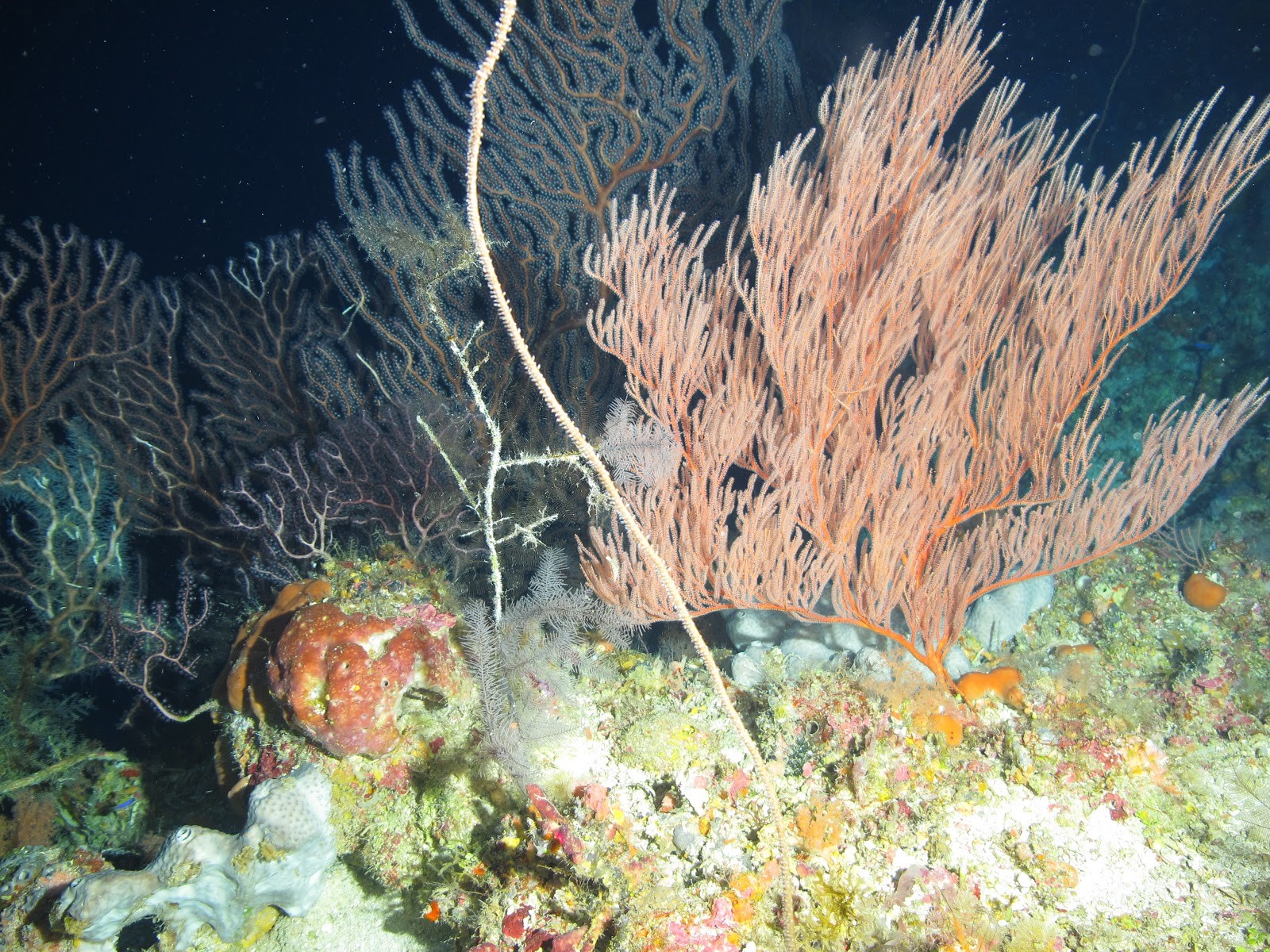NCCOS’s research cruise in the U.S. Caribbean last month aboard NOAA Ship Nancy Foster marks the fifteenth year of ship-based coral ecosystem investigations supported by NOAA’s Coral Reef Conservation Program. The mission was part of an ongoing project to explore and map coral reef ecosystems in high priority areas identified by Puerto Rico and the U.S. Virgin Islands (USVI). The data collected will help characterize the diversity, distribution, and condition of shallow-water and mesophotic coral ecosystems (98–985 feet deep), as well as their associated fish communities. This year, the target area included previously unmapped and unexplored reefs on the coastal shelf of northwest St Croix, USVI.

For the first time, the researchers used two hull-mounted multibeam sonars to map seafloor features and habitat in high detail, with a total of 178 square miles surveyed in St. Croix and St. Thomas at depths ranging from 36 to 10,062 feet. The multi-institutional team used sonar to simultaneously measure fish size and distribution within the project area, and a remotely operated vehicle to record 49 hours of high-definition video covering seven and a half miles of seafloor. The data will help inform management and research decisions regarding USVI’s essential reef habitats.
Scientists from the NCCOS Deep Coral Ecology Lab in Charleston, South Carolina, led eight dives over two days to sample deep corals between 131 and 656 feet deep. The group collected 41 samples representing 14 taxa, almost a third of the taxa observed during the research mission. The samples will enhance population connectivity studies funded by NOAA’s RESTORE Science Program, augment Smithsonian archives, and support the development of a regional species guide for the U.S. Caribbean.

Project partners include NOAA’s Coral Reef Conservation Program, NOAA’s Office for Coastal Management, the University of the Virgin Islands, the University of North Carolina at Wilmington’s Undersea Vehicle Program, Solmar Hydro, and student interns.
For more information, contact Tim Battista, or visit the project webpage. View ROV highlight footage from the mission.
[URIS id=64909]
